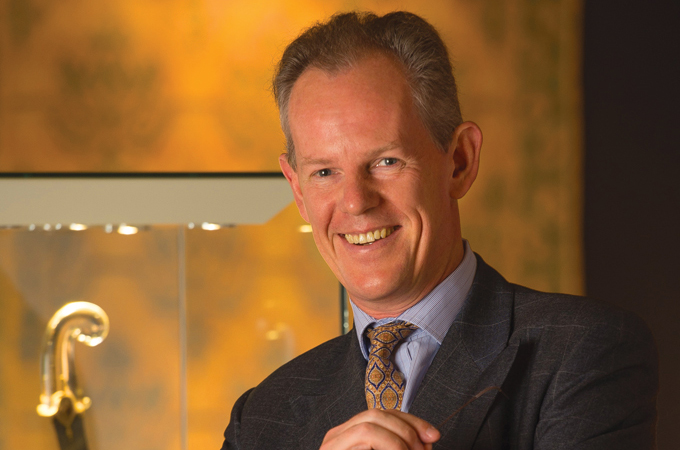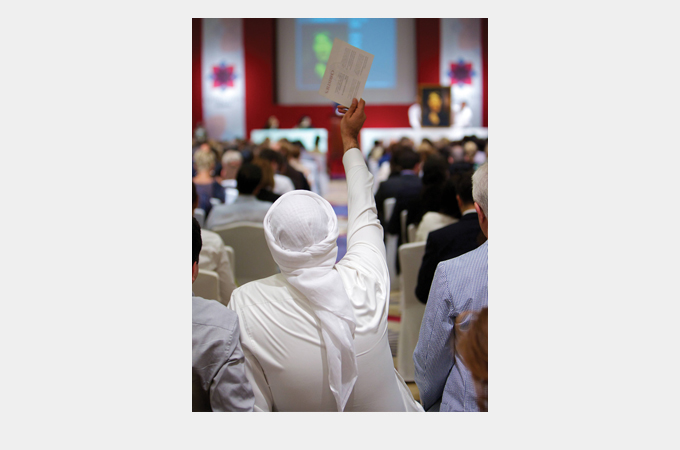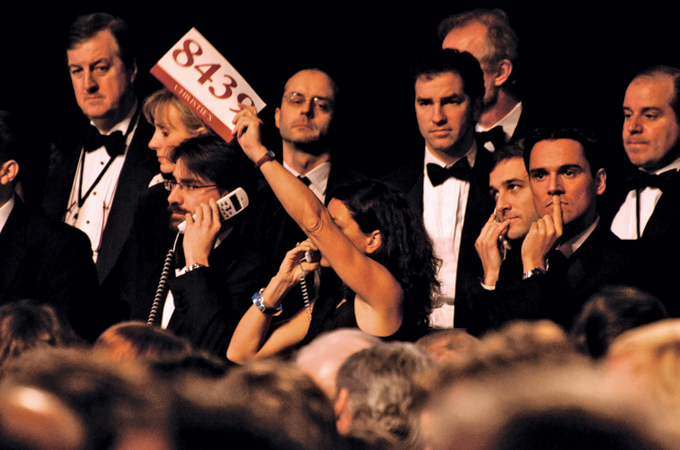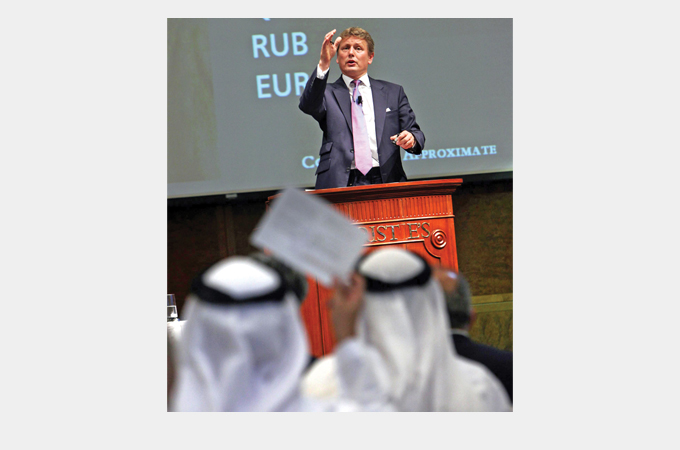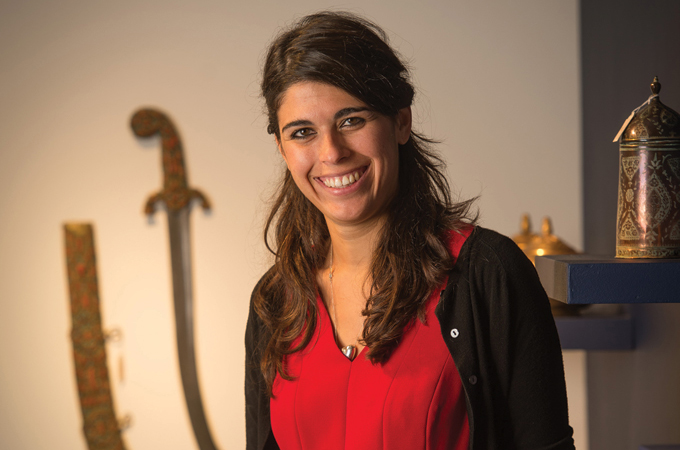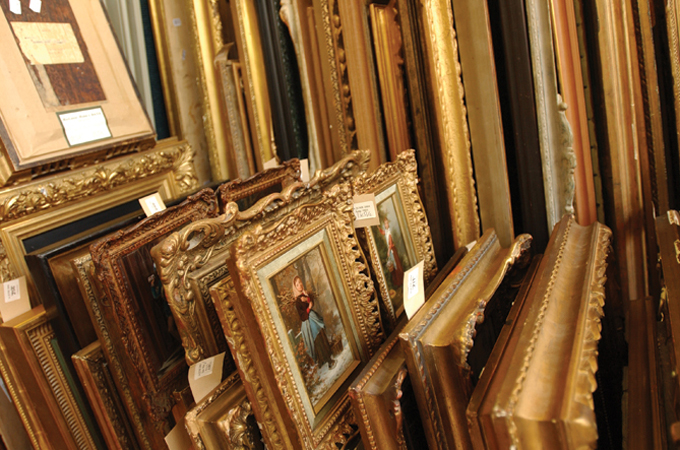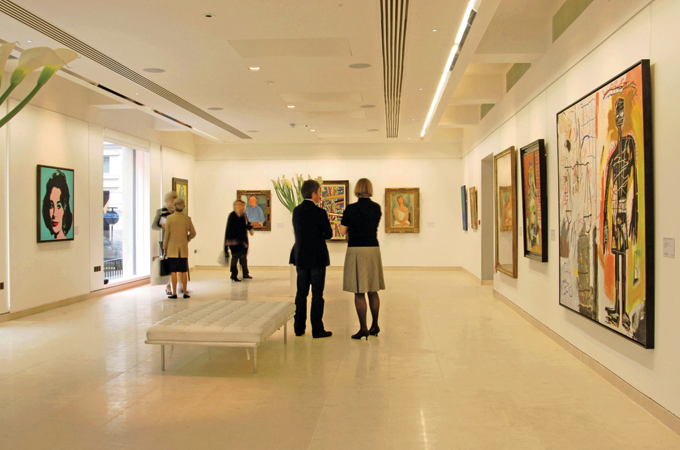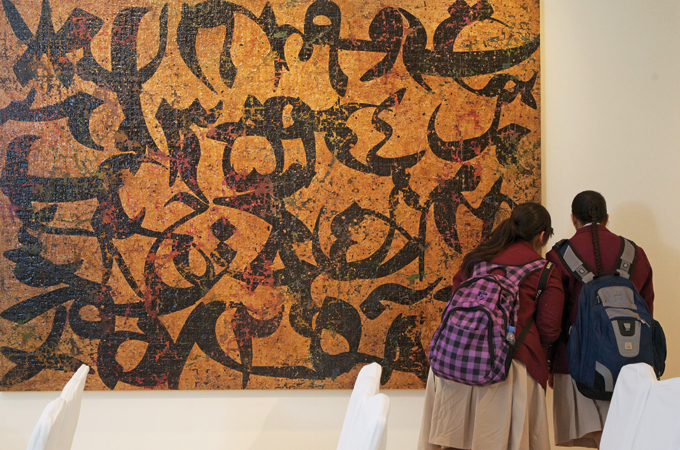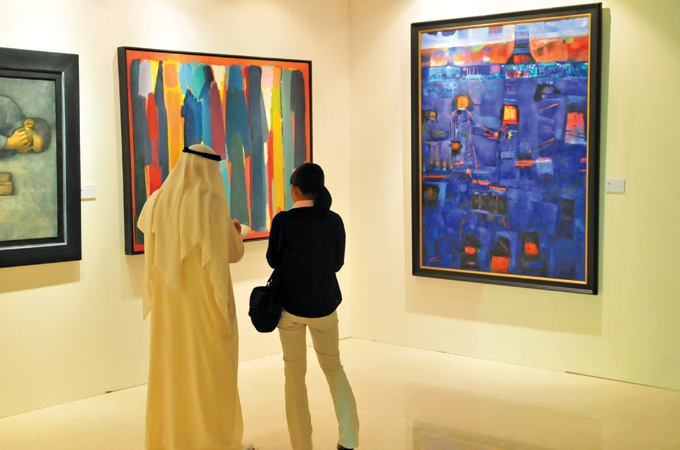Autumn 2014
Founded in 1766, Christie’s represents a brand synonymous with quality, luxury and sophistication. As an organisation it has dealt with some of the largest sales of fine art in the world, showcasing both the unique and the beautiful. Boasting a global presence that has 53 offices in 32 countries, the UK-based business has hosted some of the most celebrated auctions throughout the centuries, now managing over 450 each year across a spectrum of 80 categories.
Christie’s main London salesroom is on King Street in affluent St James’s, where it has been based since 1823. It also has a second salesroom in South Kensington, which opened in 1975 and between them they host four exhibitions and auctions of Islamic art a year.
This April, Christie’s King Street set a sales record for its Islamic art auction, raising the profile of its bi-annual event. Arabian Knight sat down with William Robinson and Sara Plumbly – two of the key figures who were instrumental in the success of that auction – to get an insight into the processes behind the event as well gauge their expectations for the October sale (which made a total of $4.57 million).
The Director and Head of Islamic Art at Christie’s, Robinson possesses the most intimate understanding of a business he has been involved in for over 30 years.
“I first emerged from university in pursuit of a job in the art world, inspired perhaps because of my father who worked in a museum. I applied to various auction houses for an apprenticeship and it was Christie’s who made me the most enticing offer,” he recalls. “I started off working on the front reception and had no previous knowledge of Islamic art. It’s a curious fact that many of the specialists that have come to Christie’s often develop a career in a totally different field to the one they originally intended.”
One of the misconceptions about Christie’s can sometimes be the many areas of its business.
“We are not a museum,” Robinson says. “Christie’s is a rare place where anyone can walk in off the street and not only view works of art but also handle them. This makes us a very unique establishment when it comes to antiquities. Handling a work of art is an essential component in understanding that art and we are very keen for people to know that. Art is more accessible here than almost anywhere else in the world.”
So does the image – as prestigious as it is – also threaten to exclude people?
“This image of an august Christie’s can be intimidating to some people because we have the reputation for selling the best works of art for often very large amounts of money. But what may not be widely known is that anyone can come to Christie’s and potentially engage us to sell on their behalf,” he says.
“Christie’s is a people business and whilst a love of art is important to my role, ultimately it is the people that matter – the buyers, the collectors, the sellers. So much is all about relationships – managing and developing them – because that’s what ultimately brings in the business. My role allows me to engage with those who are equally enthusiastic about Islamic art and it rewards me by sharing something that has significant meaning.”
The field of Islamic art still has many holes left to fill and there remain few clues about one of the most significant periods in the history of this art.
“There is very little Arab metal work of the 16th-20th century. Practically nothing, in fact. Over 400 years and not a single serious book on the subject highlights some of the challenges we still face. Arab metal work of the medieval period is fantastic. In fact, it was as good as anywhere recorded but this “black-hole” suddenly emerges during the Ottoman period that is still begging to be filled.”
HARD WORK
Commenting on the October sale, Robinson says: “It’s a lot of hard work spread over a relatively short period of time. There is always an exhibition prior to the sale and the most exciting ones are inevitably those that are being brought to the public attention for the first time.
“My direct role is all about building relationships and sustaining them. A great deal happens before the first lot of an auction is put up for sale. If someone comes to us with a collection they want to sell, then the first thing to realise is that they have already mentally stopped buying or they have shifted their focus onto something else. Some people have short collecting cycles while others are the ones that are formed over a longer period of time.”
So different collectors have different motivations?
“Some demonstrate similarities but generally they are very different. For some collectors the most important thing is just getting the art. The competitive element is the driving force behind the purchase. Others buy art to understand a piece more and then there are those who simply lock their collections away in a country they don’t even live in.
“We are not here to judge. We are the middlemen – we have a vested interest in getting the highest price, whilst maintaining a level of trust that is essential to the business. Some of these people have a huge amount of experience and can only be guided. They come to us for advice and appreciate the exchange of ideas and talking about their products.
“Sellers are always happier to consign something to you if you can relate to the work of art.”
While April sale “exceeded all expectations”, Robinson says one can never truly be certain on the outcome of every auction. “Ultimately, it will come down to how much two people want something, especially if they realise they may never get the chance again to own a particular piece in their own lifetime,” he points out.
SKILLED AUCTIONEER
Amongst his many abilities, Robinson is also a skilled auctioneer and this is a complex part of his role that he takes a huge amount of enjoyment from.
“When everything goes well, then it can be an experience of pure happiness. When I step into the auctioneer’s box, I still feel nervous. I don’t think that ever leaves you because whilst the processes are the same, the audience is always different and every element of a sale is dictated by the atmosphere in the room. As an auctioneer I can sense very early on if it is going to be a good day or not.
“In some ways it is like being an actor. You have to perform and you adapt that performance to reflect the feedback you are getting.
“I remember one auction I was running back in 2004 – it remains one of my most enjoyable memories – because we were selling off a collection of rare tiles that had been locked away underground for many years and there was a huge buzz when they came to market. The first lot had a reserve prize of around £4,000 and eventually went for £60,000 and I immediately thought to myself – ‘Game On, William’.”
The focus of Arabian Knight’s interview switched when Plumbly joined the conversation, as the person directly responsible for discovering and bringing many of these works to auction.
Plumbly has been with Christie’s for the last eight years and is now the Head of Department in Islamic and Indian Art.
Was this a role she always felt drawn to?
“It’s actually funny you should ask me that question,” she says. “Just recently I was leafing through an old school-leavers book and where it said: “What do you want to do as a career?” I found I had written down I wanted to be the Head of Islamic Art at Christie’s!
“My interest in the subject stems back to the time I spent growing up in the Middle East, particularly Saudi Arabia, Egypt and Syria, where I was exposed to Islamic art from a very young age.
“For me this is very much a dream come true. I am surrounded by some of the most exquisite works of art and everyone has its own unique place in history and a very personal story to tell about the evolution of Islamic art through the centuries.”
She reaches excitedly over to a blue and white pottery dish from the auction catalogue and places it down.
“This was an amazing find,” she declares, barely able to contain her excitement. “It is a rare piece that fills a space between 1430 and 1470 and was discovered whilst I was sourcing new items in Greece with a colleague. The owner didn’t know what it was (nor what it was worth) and had sat it in a cupboard under her stairs for quite a long time.”
The beautifully painted blue dish with intricate hand-painted flower heads and flowing vines was one of the highlights of the October sale.
KEY ROLE
With two sales a year at each London location, one of Plumbly’s main roles is to uncover items she can bring to auction and this involves a great deal of travelling.
“Work on each sale first begins with sourcing the items. The majority of collectors of Islamic art are now based in Europe and America and as we build our portfolio for each sale, we need to bring enough artifacts together. We look at a number of factors to determine the value and salability of an item and any estimate we give depends a great deal on its condition, the rarity of the piece, the aesthetics and of course how the market is moving.
“People also contact us via email or come into the main office with images of their art but what might be fashionable this year could quickly become unpopular the next. Manuscripts are very strong at the moment but that trend could change with demand.”
Once the items are found, the next phase in the run up to an auction is the researching and scientific testing of the items onsite at Christie’s.
“This is a part I particularly like. Down here in the ‘dungeon’ (her workshop) we keep everything together for a sale and I get the chance to experience the company of some amazing works of art that I fall in love with before they are taken away.”
It’s the perfect bittersweet romance. To love something and spend time with it just long enough not get tired of it or the feelings it encourages.
Plumbly moves excitedly to a corner of the room and returns clutching a manuscript. It is a handwritten Quran copied in India sometime around 1687. The text is completely written in gold and unusually for a piece such as this, set on blue coloured paper. Another rare example of something in immaculate condition that represents a beautiful moment in history.
So with her putting so much effort in getting items to auction, does she have any aspirations to be an auctioneer herself?
“Absolutely not! I’d be terrified. It’s quite a daunting thing. It’s a tough job. Even the process behind selecting an auctioneer is a gruelling one. It all happens so quickly for the trainees. It’s like the X-Factor,” she laughs.
And when the moment of the auction arrives, does she suffer nerves?
“You invest six months at a time in each auction and when the day arrives, of course, you are nervous. Just like the auctioneers, as an onlooker – because that is all I become when the sale starts – I can pick up a sense in the room.
“Even ahead of this, when the exhibition takes place about a week before you get to see all the main academics, collectors and museum curators turn up en-masse and that can be an early indicator of what to expect.”
And when it’s all over…
“The first thing you do is exhale! It’s one very big sigh of relief to get to the end of a sale, before you even look at the numbers. But you don’t get very much time to rest on your laurels if it went well [or nurse your pride if it didn’t] because you’re straight into the next one before you know it. Any pieces that are to be submitted for sale need to be with us at least four months in advance of the auction and then the works need to be photographed, researched and catalogued.
“Then you take the catalogue out and push it under the noses of as many potential buyers as you can!”
Robinson’s and Plumbly’s insights into the world of Christie’s show that though some may perceive the business as elitist and fusty, the reality couldn’t be any more different. Christie’s as an organisation has inherited perceptions that will probably only pass with time but for a business whose primary focus is on yesterday, it has adapted efficiently to the challenges of today and in that sense future-proofed itself for the possibilities of tomorrow.



